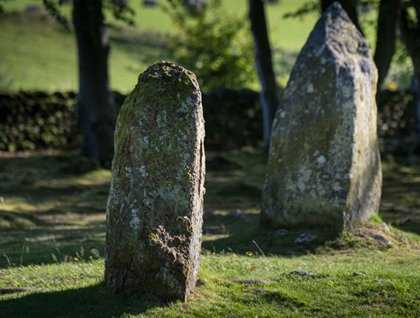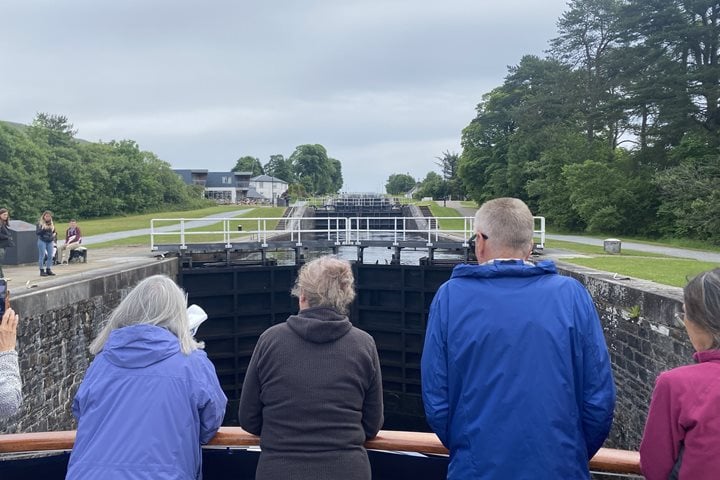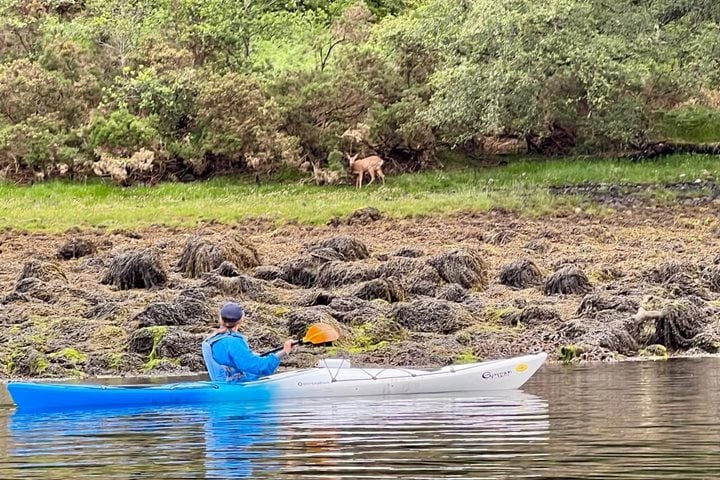Our last full day on board Lord of the Glens began with a stately descent of the locks at Fort Augustus down to the mouth of Loch Ness itself. The famous loch sparkled in the sunshine this morning as we left behind the sleepy village and headed out along its 23-mile length. Because of its great depth (more than 1000 feet–deeper than the North Sea) it represents the largest body of fresh water in Scotland. However, its best-known resident, Nessie the Loch Ness Monster, proved elusive as ever. More substantial were the ruins of Urquhart Castle, one of Scotland’s great medieval castles, standing guard on a dramatic rock on the shores of Loch Ness. The site of a fortification from prehistoric times, and the residence of a minor Pictish king converted to Christianity by St. Columba in the sixth century, the present walls date from 1230 until 1691 when the castle was finally destroyed to prevent it from falling into Jacobite hands.
During lunch our ship arrived at the Muirton Locks in Inverness, the final destination of our cruise. Our afternoon took us first to the historic site of the Battle of Culloden, where Jacobite ambition to restore the long-vanquished Stuart dynasty to the British throne came to its final, desperate end on April 16, 1746. A superb interpretation centre told the story of the conflict and its traumatic aftermath using innovative techniques, including an alarmingly realistic immersive experience of the heat of the battle. Then we strolled around the moor of Culloden, the position of the government lines shown by red flags, those of the Jacobites by blue flags, indicating the vast scale of the battle. Only the pleasant, warm sunshine seemed out place, offering a stark contrast to the bitingly cold damp conditions faced by the combatants on the day. Another change of mood was provided by the cheerful presence of a troupe of Highland cows, who became great stars with the photographers and animal lovers amongst us.
A short journey then took us to the Clava Cairns, a group of Early Bronze passage graves with standing stones and a ring cairn dating from about 2000 - 1500 B.C. These extraordinary monuments were aligned to the midwinter solstice sunset, consisting of rings within rings within rings, and were highly symbolic, with varied use of size, colour, and texture stones in different parts of the monuments. The subtleties of their meanings may be lost to their modern-day Scottish descendants, but the achievement of these early farmers formed a fitting conclusion to our wonderful Highland voyage.







